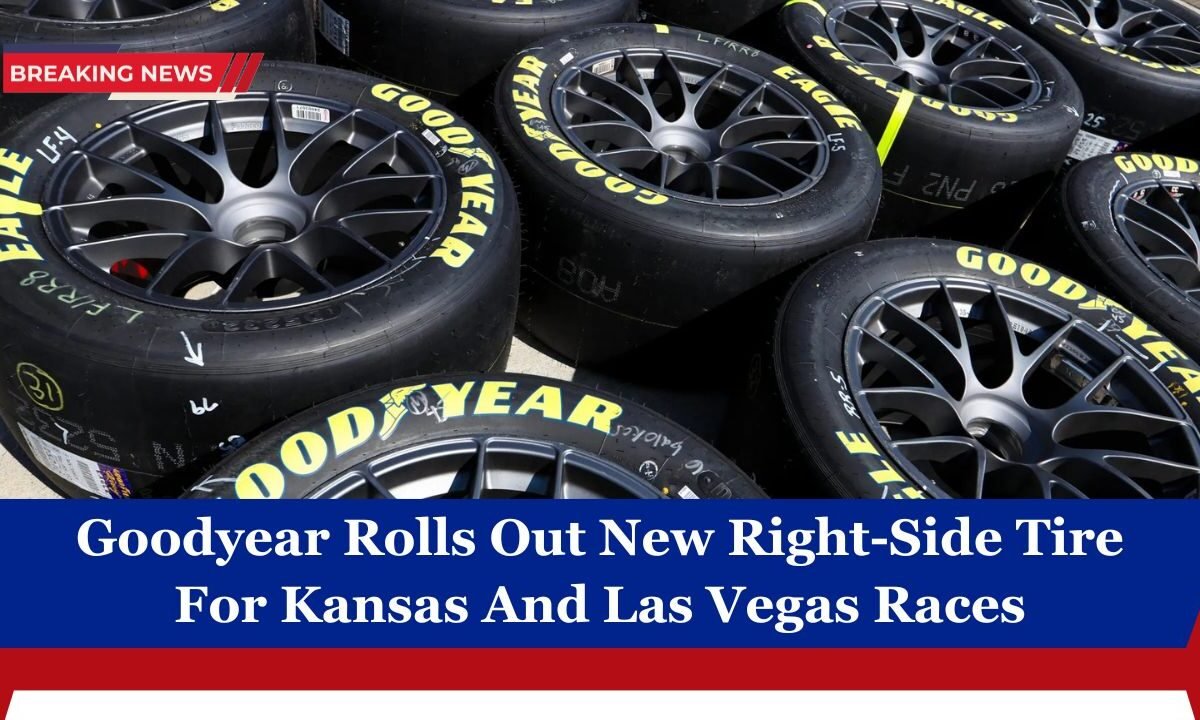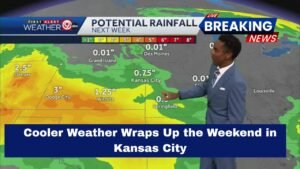Goodyear is introducing a new right-side tire construction for both the NASCAR Cup Series and Xfinity Series at Kansas Speedway, which will also be used at Las Vegas Motor Speedway in early October.
This change aims to offer teams more strategy flexibility, improved grip under heavy loads, and better overall tire durability on these 1.5-mile tracks.
What’s Different: Tire Construction & Why It Matters
The new right-side tires will be paired with a left-side Racing Eagle tire that has already been used at similarly sized tracks this season.
The updated right-side construction has undergone changes intended to increase durability and allow crew chiefs to vary their strategies, especially under the wear conditions that tracks like Kansas and Las Vegas present.
Justin Fantozzi, Goodyear’s operations manager for global race tires, said that Kansas’s surface, with its multiple grooves and relatively smooth pavement, has shown notable tire wear in recent races.
He believes the new right-side design gives teams more tools to balance grip vs outright speed, depending on track conditions and race length.
Tire Allotment & Usage: Sets per Weekend
Each team in both Cup and Xfinity series will have a defined allotment of tires for the Kansas event. Here’s how it breaks down:
| Series | Total Sets per Team | New Sets for Race | Practice Sets | Qualifying Sets (carries into race) |
|---|---|---|---|---|
| Cup Series | 10 sets | 8 | 1 | 1 |
| Xfinity Series | 6 sets | 4 | 1 | 1 |
- The Cup Series’ Kansas race is 267 laps (400 miles), so the 8 new sets are for race usage; one set is for practice, and one is reserved for qualifying and then used in the race.
- The Xfinity Series has a 200-lap, 300-mile event, with 6 total sets: 4 new for the race, one for practice, and one for qualifying that transfers.
Past Usage and Consistency
The left-side Racing Eagle tire that pairs with the new right-side design has already been used this season at tracks like Charlotte Motor Speedway, Michigan International Speedway, Indianapolis Motor Speedway, and Darlington.
For the Xfinity Series, that same left-side tire was used at Las Vegas, Charlotte, Texas, and Nashville Superspeedway.
By using a familiar left-side component, teams don’t have to adapt both sides simultaneously, making this partially new setup easier to integrate.
It means the main variable is how the new right-side tire performs under the stress of corner loads, heat cycle, and track wear.
Strategic Implications for Teams
- Crew Chief Choices: More strategy options. Teams can gamble more on setups that favor speed or durability depending on how quickly the right side heats up or wears down.
- Qualifying vs Race Trade-Offs: With one qualifying set that carries into the race, teams must decide whether to push hard in qualifying (risking wear) or save for race performance.
- Pit Strategy: If the right‐side wears quicker than expected, teams might schedule extra pit stops or manage tire life more conservatively.
- Tire Management: Drivers will have to be mindful of how they use the right-side during high load corners, throttle application, and in traffic.
Looking Ahead: Las Vegas Adoption
The same tire setup will be used when the series moves to Las Vegas Motor Speedway on Oct. 11-12. Because Las Vegas is also a 1.5-mile track with its own characteristics (track temperature, banking, pavement age), the performance data from Kansas will be closely watched. Teams that adapt well at Kansas could gain an edge in Las Vegas.
Goodyear’s new right-side tire rollout for Kansas and Las Vegas is more than just a technical update—it’s a strategic pivot. By keeping the left-side tire consistent and introducing enhanced right-side durability and flexibility, Goodyear gives teams the tools to balance speed, grip, and longevity.
How teams adapt in Kansas will likely influence performance in Las Vegas. For crew chiefs and drivers alike, success may well come down to who best leverages the new tire under race pressure.
Expect more aggressive tire management, smart pit decisions, and perhaps surprises as some teams unlock performance gains with this fresh rubber setup.




